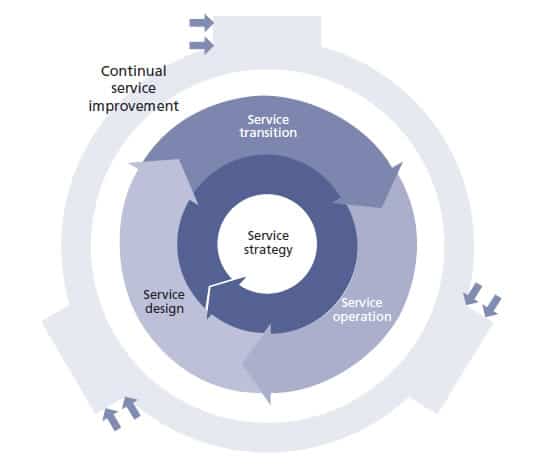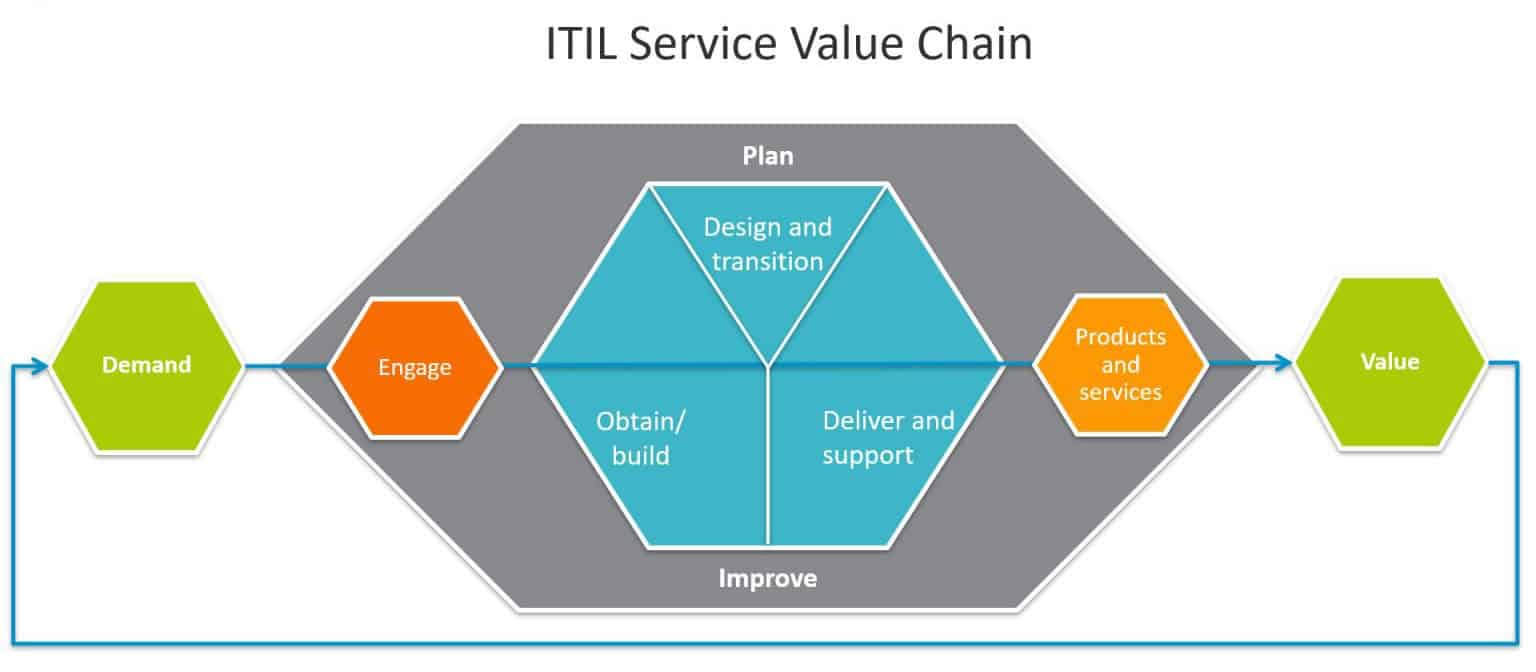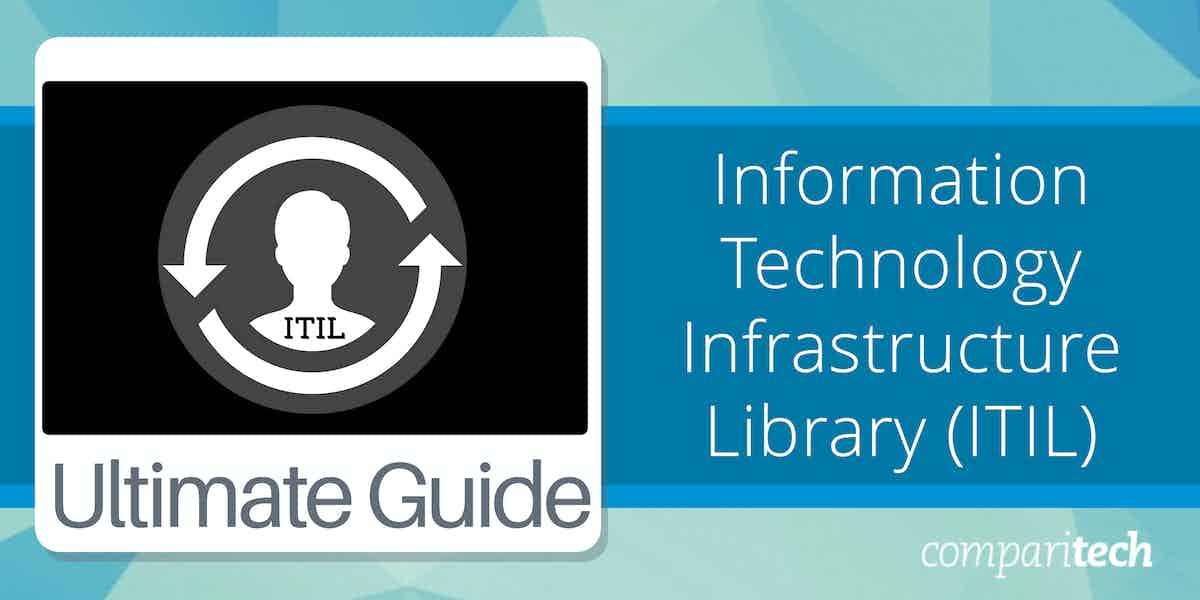Organizations are increasingly relying on technology to streamline their operations and deliver exceptional services. As a result, the management and optimization of IT services have become crucial to ensuring business success. The Information Technology Infrastructure Library (ITIL) provides a structured approach to IT service management (ITSM) that helps organizations align their IT services with business needs, improve efficiency, and drive continuous improvement.
This guide is a comprehensive resource designed to introduce both newcomers and experienced professionals to ITIL’s best practices and principles. ITIL is widely regarded as one of the most popular frameworks for IT service management, offering a set of guidelines that organizations can follow to manage their IT operations effectively.
The standard will help those who are looking to improve service delivery, reduce operational costs, or enhance customer satisfaction, implementing ITIL can help organizations achieve these goals by focusing on service lifecycle management, from design and transition to operation and continual improvement.
This guide explores the core components of ITIL, including its five stages of the service lifecycle: Service Strategy, Service Design, Service Transition, Service Operation, and Continual Service Improvement. It also delves into the key ITIL processes and functions, such as incident management, problem management, change management, and service desk operations, which enable organizations to ensure that their IT services run smoothly and meet user needs.
For organizations looking to enhance their IT service management, adopting ITIL best practices can provide significant benefits, such as improved service quality, better risk management, and greater alignment between IT and business objectives. Whether you’re just beginning to implement ITIL or seeking to optimize your current ITSM practices, this guide provides the knowledge and practical insights you need to navigate the ITIL framework effectively and leverage its full potential for your organization.
What Is ITIL?
In the early days of enterprise IT, the IT department was viewed as a cost center within the business. To demonstrate value, IT organizations and professionals began to pursue a new approach to designing, delivering, managing, and improving the way businesses use information technology. This new approach is known as IT Service Management (ITSM). As a growing number of businesses began to adopt the ITSM approach, there was a need to standardize processes for the management of IT services. This gave rise to the Information Technology Infrastructure Library (ITIL) framework and other standards.
ITIL is one of the leading global frameworks for IT service management and delivery. The ITIL framework offers a detailed set of best practices for managing and delivering IT services. It describes processes, procedures, tasks, and checklists which are neither organization-specific nor technology-specific but can be applied by an organization toward strategy, delivering value, and maintaining a minimum level of competency. The ITIL framework allows an organization to define its IT service and align them with business needs, establish a baseline to measure performance and produce a clear model for continual service improvement.

ITIL is also used to demonstrate compliance. However, there is no formal independent third-party compliance assessment available for ITIL compliance in an organization. Certification in ITIL is only available to individuals. Over the years, the ITIL framework has been streamlined and adapted to reflect a rapidly changing digital landscape. Today, the ITIL framework is recognized internationally as one of the most popular IT service delivery frameworks in the world. Because of its widespread adoption, ITIL definitions and concepts act as a common language between IT professionals and service providers.
Why Is ITIL Important?
The importance of the ITIL framework in the transformation of modern enterprise IT cannot be overemphasized. ITIL’s publications, guidance, and emphasis on aligning IT services with business needs have enabled it to bring the benefit of IT in solving business challenges while managing costs and risk. ITIL provides a systematic and professional approach to the delivery and management of IT services to organizations both within and without.
ITIL’s emphasis on value creation ensures that IT is effectively providing value for the organization through the creation and management of services that align with the overall business goal. Here are some of the benefits ITIL practices bring to organizations:
- Enables the IT department to be more focused on addressing business issues.
- Provides best practices that help to reduce IT operations costs.
- Improves IT productivity and customer experience.
- Supports effective management of risk and resource utilization.
ITIL also promotes and enables business change and continuous service improvement. The emphasis on Continual Service Improvement (CSI) acts as a constant motivation for organizations to get better at every process and service they provide. Organizations that are resistant to change and CSI may not be able to reap the full benefits that the ITIL framework brings.
A Brief History of ITIL
The ITIL framework originated in the UK Government Office of Government Commerce (formally the Central Computer and Telecommunications Agency). When the UK Government determined that it was not satisfied with the quality and strategic benefit of the IT services that it was being provided. The government tasked the then Office of Government Commerce (OGC) to develop a set of best practices to maximize the value of IT and efficient use of resources in both the private and public sectors. This resulted in the creation of the first edition of ITIL (ITIL v1) containing more than 30 volumes.
To make the framework more usable for IT professionals and service providers, a new version of ITIL (ITIL v2) was released in 2000/2001. It collapsed those volumes into a set of nine publications. In 2007, the ITIL v3 framework was published. ITIL v3 further reduced the previous version into five core publications which together form the ITIL service lifecycle (please see Figure 1.0 above). Each publication corresponds to a stage of the ITIL service lifecycle. In 2014, AXELOS (a joint venture set up by the UK Government and Capita PLC) took over the development and maintenance of the ITIL framework and other standards formerly owned by the OGC, including accrediting training and examination institutes.
ITIL v3 happens to be the most popular version among ITIL practitioners today. After many years of widespread adoption, a new version was released in February 2019—ITIL 4 edition. This update builds on the elaborate process guidance offered in ITIL v3 and accounts for modern ways of working such as Agile, DevOps, and Lean. PeopleCert, an examination institute that was responsible for delivering AXELOS exams, acquired AXELOS in 2021. This officially makes them solely responsible for the development and maintenance of ITIL and other related frameworks.
The ITIL 4 and the Service Value System

The recent release of ITIL v4 is changing the way ITSM is delivered. It provides the tools and insight to engage with the reality of modern-day IT governance such as cloud computing, digital transformation, machine learning, and others. The main changes according to Wikipedia were “to consider end-end Service Management from holistic and value-centric perspectives, to align with philosophies such as Agile, DevOps and Lean, and to reduce the emphasis on IT Service Management in favor of general Service Management”.
ITIL 4 is a significant transition from ITIL v3 to a newer, more modern, and agile approach. While previous versions placed a strong emphasis on the management of IT services throughout the service lifecycle, the ITIL 4 framework is built around a new model called the Service Value System (SVS). The core element of the ITIL SVS is the Service Value Chain. The Service Value Chain is an operating model which “outlines the key activities required to respond to demand and facilitate value realization through the creation and management of products and services”. The ultimate goal of the service value chain is to create value for the organization through a six-step process that includes:
- Planning Identifies a strategic direction of improvement for the IT organization.
- Engagement Captures the needs of stakeholders and maintains positive stakeholder relations.
- Design and Transition Creates products and services that meet stakeholder expectations for quality, cost, and timeliness.
- Procurement/Building Ensures that customers of the IT organization can access essential service components when required, according to the agreed specifications.
- Deliver and Support Delivers and supports IT services that meet the organization’s strategic needs and the expectations of customers.
- Improve Facilitates ongoing improvement of all IT-related products and services, all activities in the value chain, and the four dimensions of service management.
ITIL Implementation
Organizations that have successfully implemented ITIL best practices report huge savings and value from IT services. If you are looking to implement ITIL in your organization, there are a variety of factors you need to consider. Some of these factors include: What problems is your organization trying to solve? What is your route to continual service improvement? What type of training and certifications does your organization need to prepare for the transition? Do you have the buy-in of management, staff, and other key stakeholders?
To effectively implement ITIL, you need to have everyone on board to adopt the new procedures and best practices. ITIL practices may seem boring, unclear, or even confusing at first because it provides mostly guidelines. This is why lots of training, mentorship, and practice are required to create the right workflow for your organization. To gain insights into how you can best implement ITIL, you need ITIL implementation tools and professionals who are certified in it.
ITIL Certification and Current Changes Under ITIL 4

ITIL certifications are available only to individuals, not to an entire organization. To maximize the value that ITIL brings to your organization, individuals might want to pursue ITIL certifications. It demonstrates that you are educated in IT service management best practices and methods that are common in modern IT; and that you possess the skills to grow and transform the business. However, ITIL certification on its own may not directly guarantee career success. A combination of real-world experience and certification is what provides a competitive advantage in the job market. An experienced IT professional with no knowledge of ITIL is probably more valuable than an ITIL-certified hire with no experience in the work environment.
AXELOS provides recommendations on which ITIL certification courses an individual can take based on their desired career path within IT. Changes have been made to the ITIL certification scheme to reflect the new ITIL 4 edition. All ITIL v3 training and examinations were discontinued in 2021. The key thing that current ITIL v3 certified practitioners should know according to AXELOS is that the release of ITIL 4 won’t invalidate their previous certifications. However, the challenge for ITIL v3 certification holders is to find a way to update their knowledge and transition to ITIL 4. Fortunately, AXELOS has developed a complete transition plan to help them transition to the newly revised framework.
The new ITIL 4 certification modules are broken down as follows:
- ITIL 4 Foundation The ITIL 4 Foundation course is an update of the ITIL Foundation course that was previously based on ITIL V3. It provides the fundamentals to embed ITIL into your day-to-day work practices.
- ITIL 4 Managing Professional The ITIL 4 Managing Professional (MP) is a stream of four modules that provides practical and technical knowledge about how to run successful IT-enabled services, teams, and workflows. It is created for IT practitioners working within technology and digital teams across businesses.
- ITIL 4 Strategic Leader ITIL Strategic Leader (SL) is a stream of two modules designed to recognize the value of ITIL, not just for IT operations, but for all digitally-enabled services. Becoming an ITIL 4 Strategic Leader demonstrates that you have a clear understanding of how IT influences and directs business strategy.
- ITIL Master The ITIL Master certification is the top-level certification of the ITIL scheme. It validates a professional’s capability to apply ITIL’s principles, methods, and techniques in the real business world. One of the prerequisites for this certification is that candidates must have work experience of at least five years in a leading, managerial, or higher management advisory role in IT service management. It remains to be seen what the eligibility requirements will be for a Master certification after the release of ITIL 4.
- ITIL 4 Extension Modules ITIL 4 Extension Modules is a stream of two modules created to extend the main ITIL 4 framework and provide organizations and professionals with the guidance to address and harness the challenges and opportunities presented by emerging technologies and themes that impact their operations.
Four Best ITIL Implementation Tools
IT service management software solutions can significantly simplify the implementation process for the ITIL best practices framework. A reliable vendor partner can offer training, consultation, and software support that helps you get the most value out of both your chosen ITIL software tool and your adoption of ITIL. Below is a review of some of the best ITIL implementation tools out there. Hopefully, this will guide you in the process of choosing the right solution for your business.
- ServiceNow ITSM One of the leading cloud-based ITSM platforms that help organizations manage digital workflows for enterprise operations. ServiceNow ITSM comes with built-in ITIL best practices that cover incident management, problem management, change management, release management, and request management. It was recognized as a leader in the 2021 Gartner Magic Quadrant for IT Service Management (ITSM). A free online demo is available on request.
- Ivanti Neurons for ITSM A well-known service management solution that automates workflows and manual processes to make your business more efficient, compliant and secure. It comes with built-in ITIL best practices that cover incident management, problem management, change management, and other advanced ITIL service management processes. It supports a flexible deployment model that allows you to operate in the cloud, in your data center, or in a hybrid model. Ivanti was recognized as a leader in the 2021 Gartner Magic Quadrant for IT Service Management (ITSM). A free trial and an online demo are available on request.
- Freshworks Freshservice A cloud-based ITSM tool that is designed to cater to the needs of MSPs and the IT operations departments, especially in multi-site organizations. Freshservice is ITIL compliant and can be used to drive service efficiency by eliminating repetitive tasks and manual processes. Freshservice was recognized as the only challenger in the 2021 Gartner Magic Quadrant for IT Service Management (ITSM). A free 21-day trial and an online demo are available on request.
- ManageEngine ServiceDesk Plus ITIL-ready help desk software that meets the Service Operation requirements of any organization. The solution supports on-premise deployment and cloud service models. ServiceDesk Plus comes in three editions: Standard, Professional, and Enterprise. The full ITIL Service Desk function is provided by the Enterprise package, which adds IT project management, configuration management, and change management features to all of the utilities offered in the Standard and Professional packages. A free trial is available on request.




